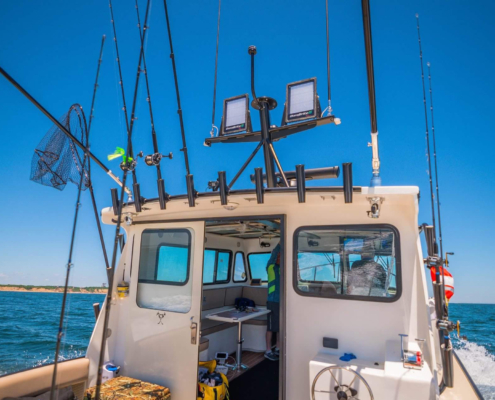 https://blog.durabritelights.com/wp-content/uploads/2025/04/How-Weatherproofing-Maximizes-the-Lifespan-of-Waterproof-Boat-Lights.jpg
1250
2000
Abstrakt Marketing
/wp-content/uploads/2024/01/DuraBrite-Logo_6a362a2d-4dff-4723-a7e4-1466056fae1e_220x.png
Abstrakt Marketing2025-04-21 13:30:212025-04-21 13:30:24How Weatherproofing Maximizes the Lifespan of Waterproof Boat Lights
https://blog.durabritelights.com/wp-content/uploads/2025/04/How-Weatherproofing-Maximizes-the-Lifespan-of-Waterproof-Boat-Lights.jpg
1250
2000
Abstrakt Marketing
/wp-content/uploads/2024/01/DuraBrite-Logo_6a362a2d-4dff-4723-a7e4-1466056fae1e_220x.png
Abstrakt Marketing2025-04-21 13:30:212025-04-21 13:30:24How Weatherproofing Maximizes the Lifespan of Waterproof Boat LightsA Comprehensive Guide to LED Waterproof Boat Light Materials: Why Quality Matters in Marine Environments
When outfitting your boat with lights, LED waterproof boat lights are the best choice. They offer energy efficiency, long lifespan, and superior illumination. Along with selecting LED lights, it’s critical to understand the materials that make up those lights before you buy, especially when operating your boat in saltwater environments. The quality of the materials used in LED waterproof boat lights plays a critical role in their durability, longevity, and performance. Low-quality or poorly suited materials can quickly lead to rust, corrosion, light failure, and even safety hazards.
Why Do Boat Light Materials Matter?
Marine environments are among the harshest on Earth. Constant exposure to saltwater, UV radiation, extreme temperatures, and stresses from physical wear due to vibration means that boat lights and their components face unique challenges. Materials that hold up well on land might quickly degrade on the open sea. When choosing LED boat lights, the materials they’re made of can drastically affect performance and lifespan.
Waterproofing isn’t enough. In saltwater environments, you also need materials that are corrosion-resistant, lightweight (to avoid adding unnecessary weight to your vessel’s mounting surfaces), UV-resistant, and durable enough to withstand constant exposure to moisture and extreme conditions. Each part of the light, from its housing to the electrical components, must be engineered with care and precision to withstand the rigors of marine conditions.
The Most Common Materials Used in LED Waterproof Boat Lights
The materials used in LED boat lights can be divided into two categories: external (luminaire and mount) and internal (wiring, contacts, and other electrical components). Here’s a breakdown of the most common materials used and their unique properties:
Stainless Steel
316 marine-grade stainless steel is a popular material for marine applications due to its excellent corrosion resistance. Its alloy composition includes iron, nickel, molybdenum, and carbon with chromium to form a passive layer on the surface that protects it from rust and corrosion, especially in saltwater environments.
- Why It’s Used: Stainless steel is often used in light fixtures, housing, and hardware. It offers strength and long-lasting durability while maintaining resistance to harsh elements.
- Benefits: It’s highly resistant to corrosion, durable, strong, and aesthetically pleasing. Generally, rainwater or rinsing with fresh water is enough to prevent corrosion.
- What Can Go Wrong: In areas that receive little rainfall or when submerged, marine-grade stainless steel can still pit or corrode due to exposure to the chloride present in seawater or sea air.
Polymers and Composites
Plastics and composite materials offer flexibility, both in terms of design and cost. Modern innovations have produced plastics that are highly resistant to UV light, impact, and corrosion, making them a viable option for boat lighting. Composites can also provide strength and durability without the weight or expense of metals.
Composites are polymer resins mixed with fibers like fiberglass, carbon, or aramid. As a result, they can be engineered to meet specific mechanical, thermal, and electrical performance requirements that other materials cannot.
- Why They’re Used: Plastics and composites are used in light casings and lenses because they’re affordable and easily moldable into various shapes and designs.
- Benefits: Lightweight, UV-resistant, and adaptable to a range of designs. Unlike metals, they do not rust or corrode. They also offer improved paint adhesion, leading to fewer issues with peeling or chipping, so they look newer for longer.
- What Can Go Wrong: Low-quality plastics can become brittle, discolored, or cracked after prolonged exposure to UV radiation and salt water, resulting in water ingress and electrical damage. Cheaper composites may degrade quickly in harsh conditions, reducing the lifespan of the light. The cost of advanced composites may be out of budget for some boaters, but their reliability and durability help offset the upfront price due to the replacement costs associated with lesser materials.
Marine-Grade Aluminum
4XXX, 5XXX, and 5052 marine-grade aluminum alloys are also highly sought-after materials for boat lights due to their lightweight yet durable and workable characteristics. These aluminum alloys are specially treated and alloyed to resist corrosion and oxidation, making them ideal for marine environments.
- Why It’s Used: The material’s lightness makes it easier to handle and install, and it does not add much weight to the vessel. It’s commonly used in light housings or fixtures.
- Benefits: Corrosion-resistant, lightweight, easy to work with, and durable.
- What Can Go Wrong: Without proper treatment, aluminum can still corrode, especially if exposed to saltwater over an extended period.
Brass and Bronze
Though less commonly used today, bronze and brass, such as 464 naval brass, remain reliable options for marine lighting due to their excellent corrosion resistance, particularly in saltwater environments. These metals have been used for centuries in maritime applications.
- Why They’re Used: Brass and bronze are still used in some high-end marine fixtures, particularly for their traditional appearance and resistance to corrosion.
- Benefits: Strong, corrosion-resistant, and aesthetically appealing.
- What Can Go Wrong: Brass and bronze are heavy and expensive, making them less practical for many modern boat lighting applications. They can also tarnish over time, requiring frequent maintenance to retain their appearance.
Protect your boat lights and other marine surfaces with DuraBrite’s advanced ceramic coatings that are up to 4 times thicker than other coatings on the market today.
Internal Components and Material Considerations
The external housing and hardware of the light are only half the equation. The internal components of LED boat lights also require careful consideration.
Electrical Contacts: The Importance of Corrosion-Resistant Metals and Solid State Design
Corrosion-resistant metals, such as tin-coated copper or gold, are often used for electrical contacts in marine LED lights. These materials prevent oxidation and ensure that electrical connections remain stable, even in moist environments.
Solid-state design for electronics on boats has become the gold standard since there are no moving parts or liquids that can be damaged due to continuous vibration or repeated impacts. These devices are inherently more stable because they eliminate the need for electrical contacts in the first place.
- What Can Go Wrong: Using lower-quality metals like standard copper or untreated metals can lead to oxidation, causing flickering lights, electrical shorts, or complete failure over time. Lights that lack solid-state design are more prone to failure in marine environments when bulbs break, connections fail, or components get disconnected.
Wiring: The Need for Marine-Grade Cables
Marine-grade wiring, typically tinned copper, is designed to resist corrosion and withstand the stresses of marine environments. Cable jackets are engineered to resist UV and saltwater damage, making them essential for ensuring a long-lasting electrical connection and preventing issues related to moisture or salt.
- What Can Go Wrong: Using non-marine-grade wiring can lead to corrosion inside the wire, causing electrical issues that are difficult to detect until a failure occurs. Saltwater intrusion can degrade the wires over time, leading to safety hazards. Inadequate cable jackets can crack over time due to UV and saltwater exposure, leading to exposed and damaged wires.
What Else Can Go Wrong With Low-Quality Materials?
When LED waterproof boat lights are made from low-quality materials or materials not suited for saltwater environments, many problems can pop up:
1. Corrosion and Rust
Saltwater is highly corrosive. When materials aren’t properly treated to resist oxidation, they can corrode, leading to rust, degradation, and light failure. Stainless steel, for example, must be marine-grade to offer the necessary protection, but even then, it can still corrode in certain conditions. Substandard metals will rust quickly, requiring frequent replacements.
2. Delaminating Paint or Powder Coating
When boat lights are coated with low-quality paint or powder coating, delamination can quickly become a noticeable issue in marine environments. Delamination occurs when the coating begins to peel or flake away from the underlying material, exposing it to salt, water, and UV rays. This can lead to a range of issues that compromise both the appearance and durability of the light fixture, often requiring premature replacement.
3. Water Penetration
Materials that aren’t completely waterproof or degrade over time may allow water to seep into the luminaire, causing electrical shorts or complete failure. Low-quality plastics can crack or discolor, compromising the light’s waterproofing.
4. UV Degradation
The sun’s ultraviolet (UV) rays can cause some materials, especially cheaper plastics and gaskets, to become brittle and weak. This can lead to cracking, which compromises the light’s waterproof integrity and shortens its lifespan.
5. Electrical Failures
Low-quality wiring or contacts that are not designed for marine use can quickly degrade. Oxidation on contacts or corrosion in wires can lead to flickering lights, unreliable performance, or even dangerous electrical shorts.
Choose DuraBrite for Best-in-Class LED Waterproof Boat Lights
Choosing high-quality materials for LED waterproof boat lights is not just about the performance specs printed on a box—it’s about safety, longevity, and reliability. By choosing DuraBrite, you gain peace of mind knowing your lights are engineered to withstand the harsh conditions of a marine environment.
That’s why we back our lights with an industry-leading 10-year warranty, and the NYPD Harbor Unit, the captains on Wicked Tuna, and Lobstermen across Maine trust them. Take a look at our lineup of recreational and commercial marine-grade lights to get started, or reach out to our team for personalized recommendations.
Share This Post
More Like This
 https://blog.durabritelights.com/wp-content/uploads/2025/04/How-Weatherproofing-Maximizes-the-Lifespan-of-Waterproof-Boat-Lights.jpg
1250
2000
Abstrakt Marketing
/wp-content/uploads/2024/01/DuraBrite-Logo_6a362a2d-4dff-4723-a7e4-1466056fae1e_220x.png
Abstrakt Marketing2025-04-21 13:30:212025-04-21 13:30:24How Weatherproofing Maximizes the Lifespan of Waterproof Boat Lights
https://blog.durabritelights.com/wp-content/uploads/2025/04/How-Weatherproofing-Maximizes-the-Lifespan-of-Waterproof-Boat-Lights.jpg
1250
2000
Abstrakt Marketing
/wp-content/uploads/2024/01/DuraBrite-Logo_6a362a2d-4dff-4723-a7e4-1466056fae1e_220x.png
Abstrakt Marketing2025-04-21 13:30:212025-04-21 13:30:24How Weatherproofing Maximizes the Lifespan of Waterproof Boat Lights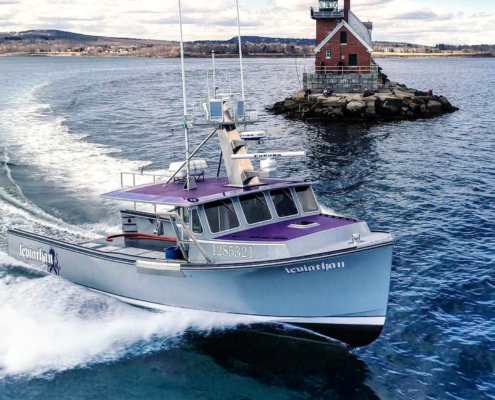 https://blog.durabritelights.com/wp-content/uploads/2025/04/leviathan-boat-on-water.jpg
1250
2000
Abstrakt Marketing
/wp-content/uploads/2024/01/DuraBrite-Logo_6a362a2d-4dff-4723-a7e4-1466056fae1e_220x.png
Abstrakt Marketing2025-04-04 18:45:522025-04-09 17:01:05How to Maximize the Lifespan of Marine LED Lighting
https://blog.durabritelights.com/wp-content/uploads/2025/04/leviathan-boat-on-water.jpg
1250
2000
Abstrakt Marketing
/wp-content/uploads/2024/01/DuraBrite-Logo_6a362a2d-4dff-4723-a7e4-1466056fae1e_220x.png
Abstrakt Marketing2025-04-04 18:45:522025-04-09 17:01:05How to Maximize the Lifespan of Marine LED Lighting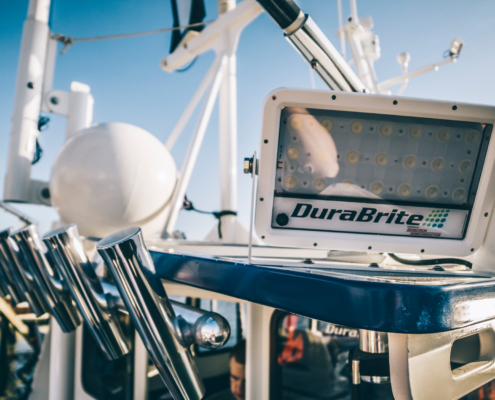 https://blog.durabritelights.com/wp-content/uploads/2025/04/Design-Ideas-for-LED-Deck-Lights-on-Your-Boat.jpg
1250
2000
Abstrakt Marketing
/wp-content/uploads/2024/01/DuraBrite-Logo_6a362a2d-4dff-4723-a7e4-1466056fae1e_220x.png
Abstrakt Marketing2025-04-02 14:09:522025-04-09 16:52:11Design Ideas for LED Deck Lights on Your Boat
https://blog.durabritelights.com/wp-content/uploads/2025/04/Design-Ideas-for-LED-Deck-Lights-on-Your-Boat.jpg
1250
2000
Abstrakt Marketing
/wp-content/uploads/2024/01/DuraBrite-Logo_6a362a2d-4dff-4723-a7e4-1466056fae1e_220x.png
Abstrakt Marketing2025-04-02 14:09:522025-04-09 16:52:11Design Ideas for LED Deck Lights on Your Boat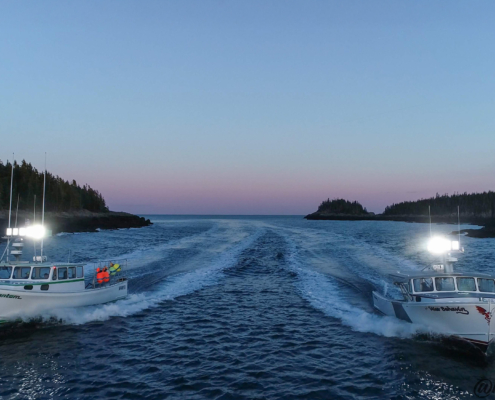 https://blog.durabritelights.com/wp-content/uploads/2025/03/Front-view-of-two-small-boats-on-water-in-the-evening.jpg
1250
2000
Abstrakt Marketing
/wp-content/uploads/2024/01/DuraBrite-Logo_6a362a2d-4dff-4723-a7e4-1466056fae1e_220x.png
Abstrakt Marketing2025-03-31 18:57:432025-04-09 16:50:06The Connection Between Energy Efficiency and LED Lights for Boats
https://blog.durabritelights.com/wp-content/uploads/2025/03/Front-view-of-two-small-boats-on-water-in-the-evening.jpg
1250
2000
Abstrakt Marketing
/wp-content/uploads/2024/01/DuraBrite-Logo_6a362a2d-4dff-4723-a7e4-1466056fae1e_220x.png
Abstrakt Marketing2025-03-31 18:57:432025-04-09 16:50:06The Connection Between Energy Efficiency and LED Lights for Boats https://blog.durabritelights.com/wp-content/uploads/2025/03/Side-image-of-a-boat-with-lights.jpg
1250
2000
Abstrakt Marketing
/wp-content/uploads/2024/01/DuraBrite-Logo_6a362a2d-4dff-4723-a7e4-1466056fae1e_220x.png
Abstrakt Marketing2025-03-27 18:36:262025-03-31 17:43:25The Hidden Costs of Cheap Marine LED Lights and How to Avoid Them
https://blog.durabritelights.com/wp-content/uploads/2025/03/Side-image-of-a-boat-with-lights.jpg
1250
2000
Abstrakt Marketing
/wp-content/uploads/2024/01/DuraBrite-Logo_6a362a2d-4dff-4723-a7e4-1466056fae1e_220x.png
Abstrakt Marketing2025-03-27 18:36:262025-03-31 17:43:25The Hidden Costs of Cheap Marine LED Lights and How to Avoid Them https://blog.durabritelights.com/wp-content/uploads/2025/03/Side-view-of-docked-boat-with-durabrite-lights.jpg
1250
2000
Abstrakt Marketing
/wp-content/uploads/2024/01/DuraBrite-Logo_6a362a2d-4dff-4723-a7e4-1466056fae1e_220x.png
Abstrakt Marketing2025-03-25 18:25:092025-03-31 17:39:29Boating Accident Statistics: How to Minimize Risks and Stay Safe
https://blog.durabritelights.com/wp-content/uploads/2025/03/Side-view-of-docked-boat-with-durabrite-lights.jpg
1250
2000
Abstrakt Marketing
/wp-content/uploads/2024/01/DuraBrite-Logo_6a362a2d-4dff-4723-a7e4-1466056fae1e_220x.png
Abstrakt Marketing2025-03-25 18:25:092025-03-31 17:39:29Boating Accident Statistics: How to Minimize Risks and Stay Safe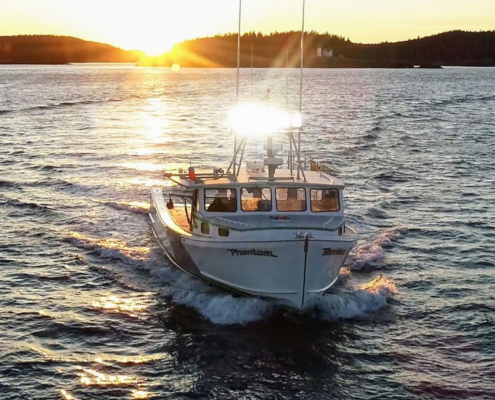 https://blog.durabritelights.com/wp-content/uploads/2025/03/The-5-Must-Have-Features-of-High-Quality-Marine-Lights.jpg
1250
2000
Abstrakt Marketing
/wp-content/uploads/2024/01/DuraBrite-Logo_6a362a2d-4dff-4723-a7e4-1466056fae1e_220x.png
Abstrakt Marketing2025-03-21 12:36:192025-03-31 17:18:16The 5 Must-Have Features of High-Quality Marine Lights
https://blog.durabritelights.com/wp-content/uploads/2025/03/The-5-Must-Have-Features-of-High-Quality-Marine-Lights.jpg
1250
2000
Abstrakt Marketing
/wp-content/uploads/2024/01/DuraBrite-Logo_6a362a2d-4dff-4723-a7e4-1466056fae1e_220x.png
Abstrakt Marketing2025-03-21 12:36:192025-03-31 17:18:16The 5 Must-Have Features of High-Quality Marine Lights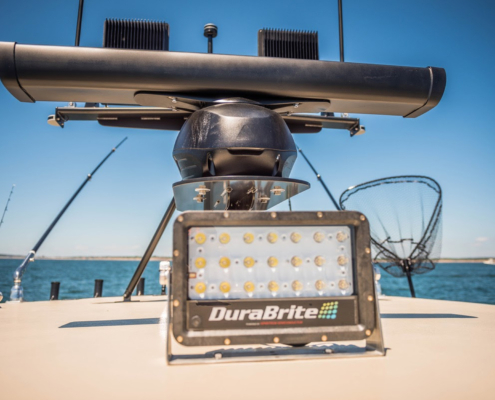 https://blog.durabritelights.com/wp-content/uploads/2025/03/DuraBrite-Lght-on-Boat.jpg
1250
1996
Abstrakt Marketing
/wp-content/uploads/2024/01/DuraBrite-Logo_6a362a2d-4dff-4723-a7e4-1466056fae1e_220x.png
Abstrakt Marketing2025-03-19 12:23:432025-03-31 17:07:19How DuraBrite Built a Better Marine Light
https://blog.durabritelights.com/wp-content/uploads/2025/03/DuraBrite-Lght-on-Boat.jpg
1250
1996
Abstrakt Marketing
/wp-content/uploads/2024/01/DuraBrite-Logo_6a362a2d-4dff-4723-a7e4-1466056fae1e_220x.png
Abstrakt Marketing2025-03-19 12:23:432025-03-31 17:07:19How DuraBrite Built a Better Marine Light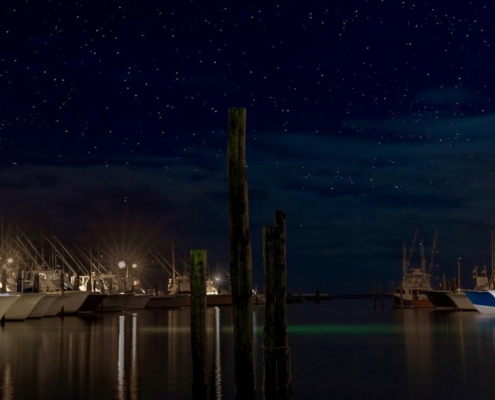 https://blog.durabritelights.com/wp-content/uploads/2025/03/Comparing-Halogen-HID-and-LED-Marine-Lights.jpg
1250
2000
Abstrakt Marketing
/wp-content/uploads/2024/01/DuraBrite-Logo_6a362a2d-4dff-4723-a7e4-1466056fae1e_220x.png
Abstrakt Marketing2025-03-17 14:26:562025-03-31 16:56:54Comparing Halogen, HID, and LED Lights for Boats: Which Is Right for You?
https://blog.durabritelights.com/wp-content/uploads/2025/03/Comparing-Halogen-HID-and-LED-Marine-Lights.jpg
1250
2000
Abstrakt Marketing
/wp-content/uploads/2024/01/DuraBrite-Logo_6a362a2d-4dff-4723-a7e4-1466056fae1e_220x.png
Abstrakt Marketing2025-03-17 14:26:562025-03-31 16:56:54Comparing Halogen, HID, and LED Lights for Boats: Which Is Right for You?Creating advanced lighting solutions that excel across extreme applications, from crab-fishing in Alaska’s Bering Sea, to unforgiving power plants to mission critical law enforcement and military tactical environments, all with uncompromising quality


